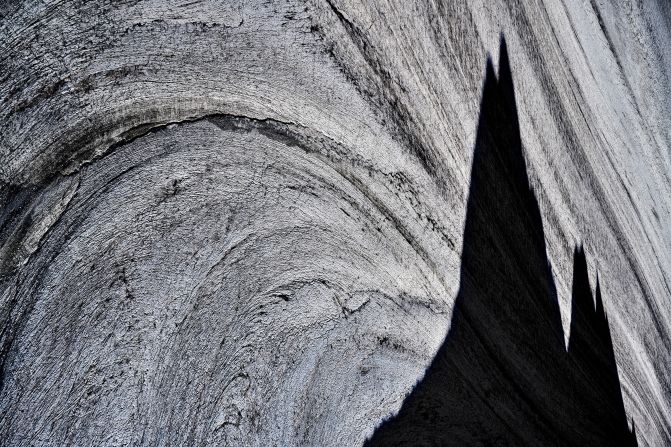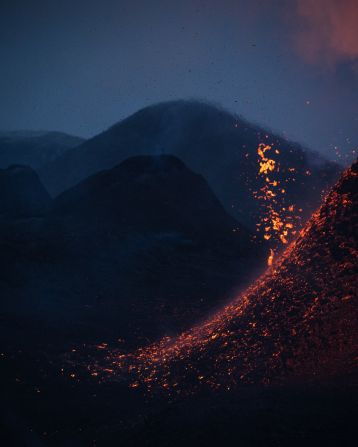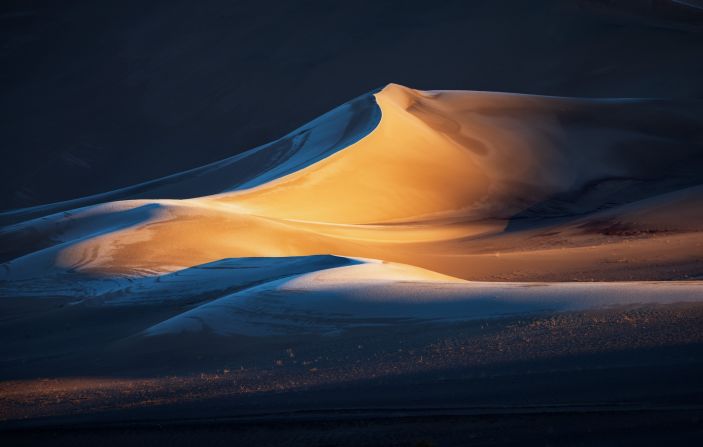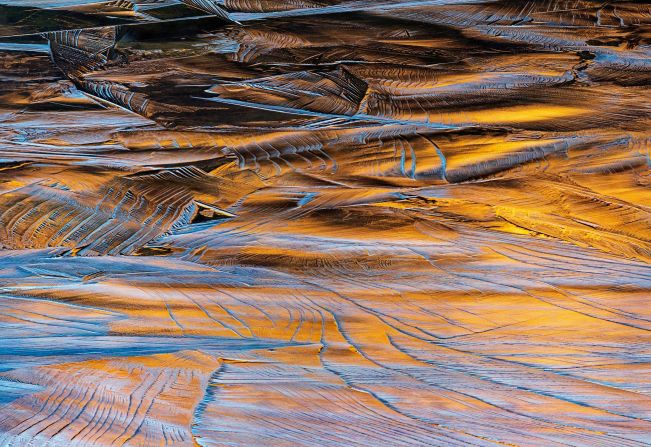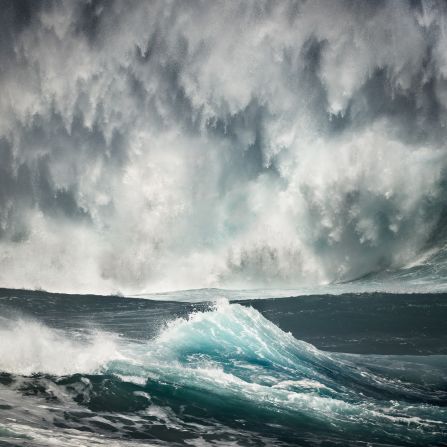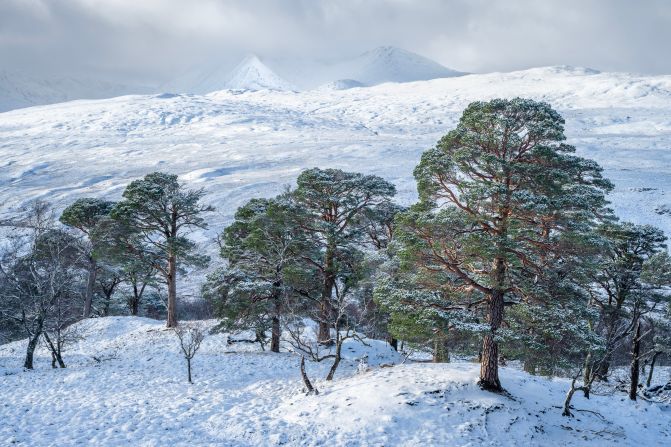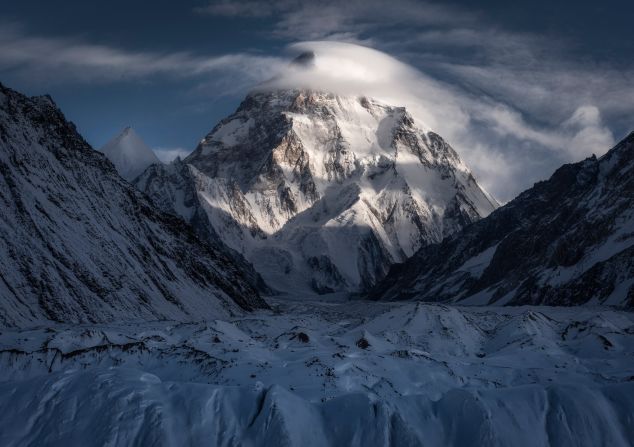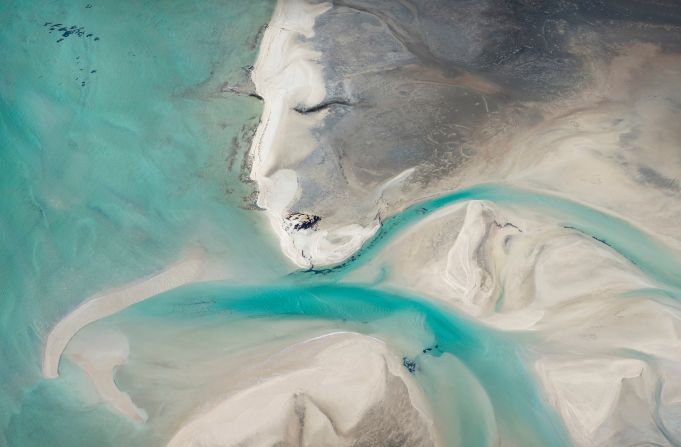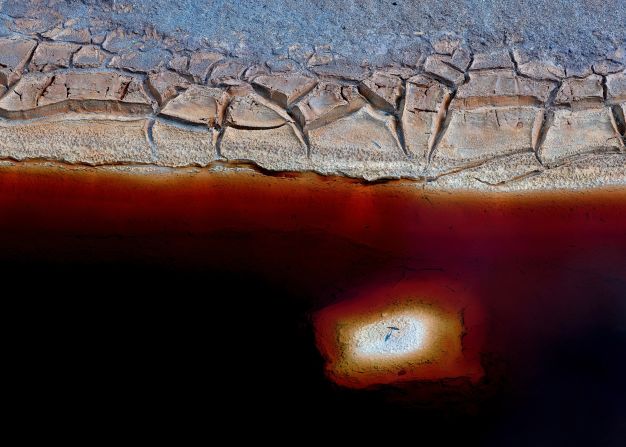Orange lava shooting up from a volcanic vent in the Reykjanes Peninsula, Iceland, and mountaintop shadows cast on a glacier in Yukon, Canada are among the winning subjects of the second annual Natural Landscape Photography Award.
The two shots, by Austrian photographer Philipp Jakesch and Canadian photographer Jim Lamont respectively, take home the joint prize in the “Photograph of the Year” category.
“With climate change the Lowell Glacier, like most glaciers in the world, is crumbling into ruin, its surface gradually disappearing beneath dirt and rubble as the ice melts,” says Lamont. “The image is intended to suggest the wave of destruction that will overwhelm us unless we stop dumping carbon into the atmosphere.”
Glaciers are melting much faster than expected, a 2021 study found. From 2000 to 2019, the melt rate accelerated from an estimated 36 centimeters per year to 69 centimeters per year. In turn, that glacier melt has contributed to an estimated 21% of sea level rise since 2000 – almost a quarter of an inch. The most rapid increase in melt took place in Alaska, western Canada and the United States.
The award for “Photographer of the Year,” which looks at a larger body of work, went to American Brent Clark, who submitted impressive shots of American wilderness, from a desert canyon in Utah to an alpine lake in Wyoming.
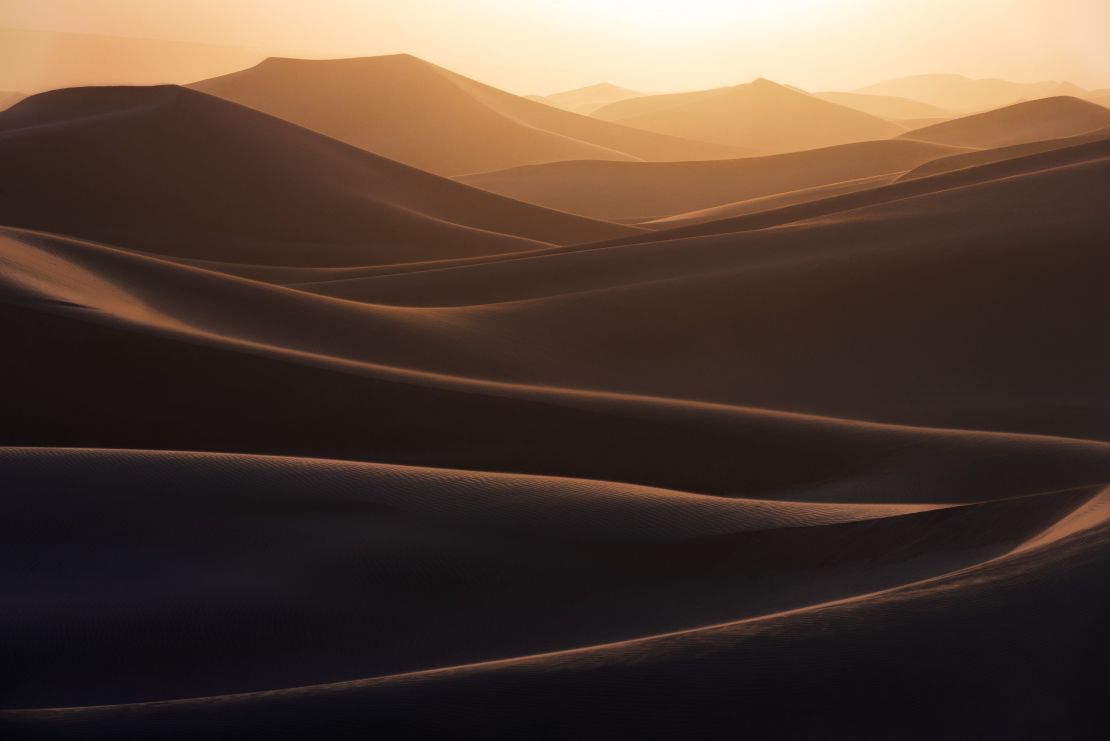
The competition was started last year by four landscape photographers – Tim Parkin, Matt Payne, Rajesh Jyothiswaran and Alex Nail — based on a golden rule: that the integrity of the subject should be maintained.
Strict rules limit the amount of digital manipulation permissible on the images, and the judging panel must have access to the original raw files, to check for authenticity. “At the heart of it is a love of and respect for the landscape,” says Tim Parkin, one of the organizers. “One of the other goals is to be able to show people a range of amazing images in a way that they doesn’t make you immediately ask ‘Did you Photoshop that?’”
Among the forbidden techniques is combining two images of different focal length, distorting existing elements to make them appear more dramatic, or removing significant elements from the scene. Standard post-processing techniques, such as correcting exposure, color and contrast, as well as dust spot and flare corrections, are allowed.
“By constraining our photographs to represent the natural world in a truthful manner, we create trust in our artform’s unique position to pair real experiences with artistic creation,” says the competition’s website.
This year, 10,700 photographs were submitted to the competition from 55 countries by 1,179 photographers. They were judged by a panel of eight experts and photographers who awarded a total of $38,750 in prizes across two dozen categories.
Browse the gallery above to see more winners from the award.

